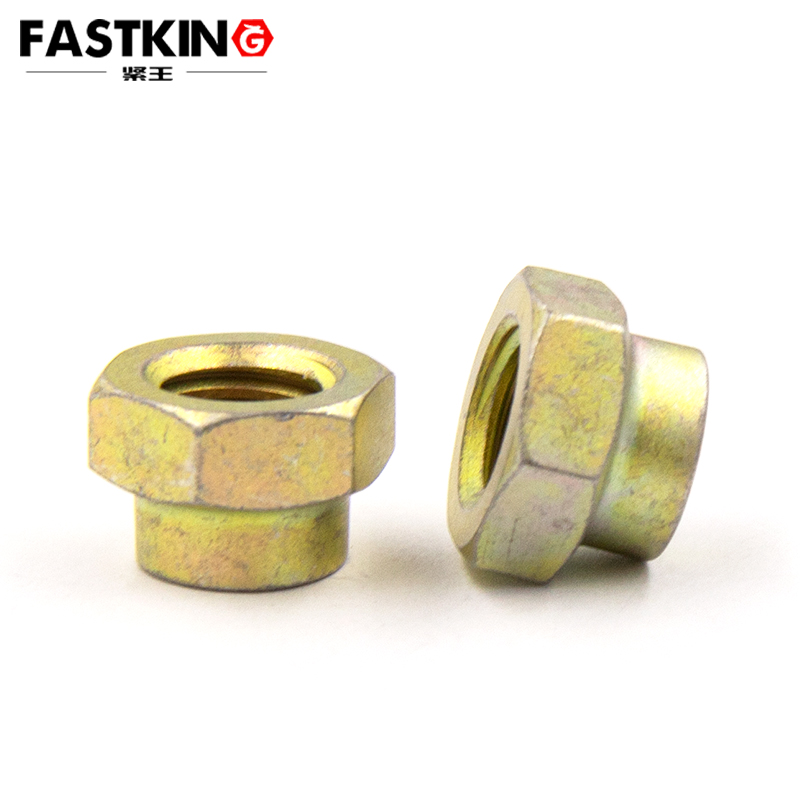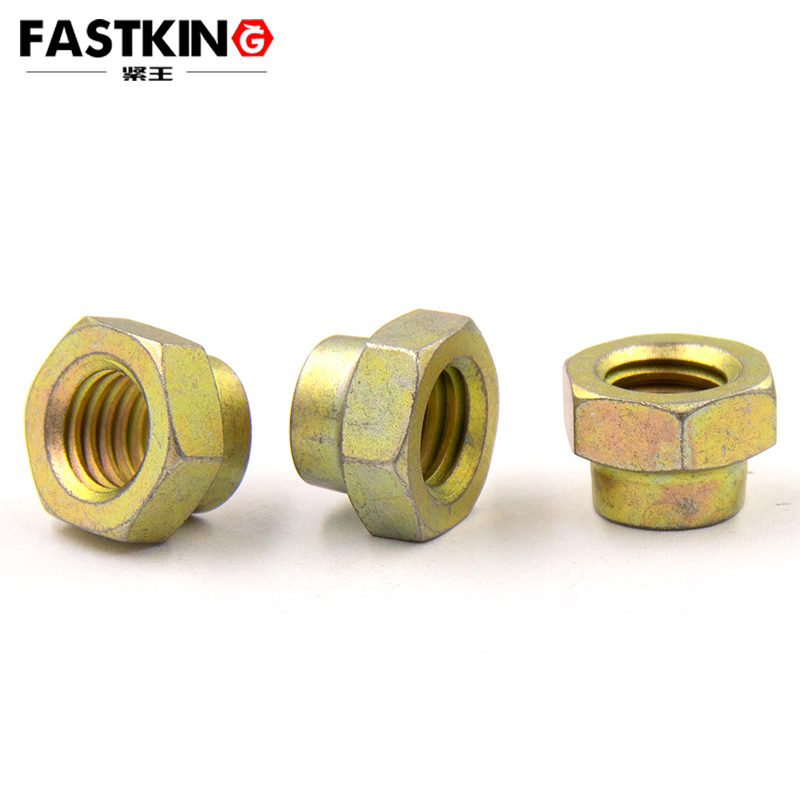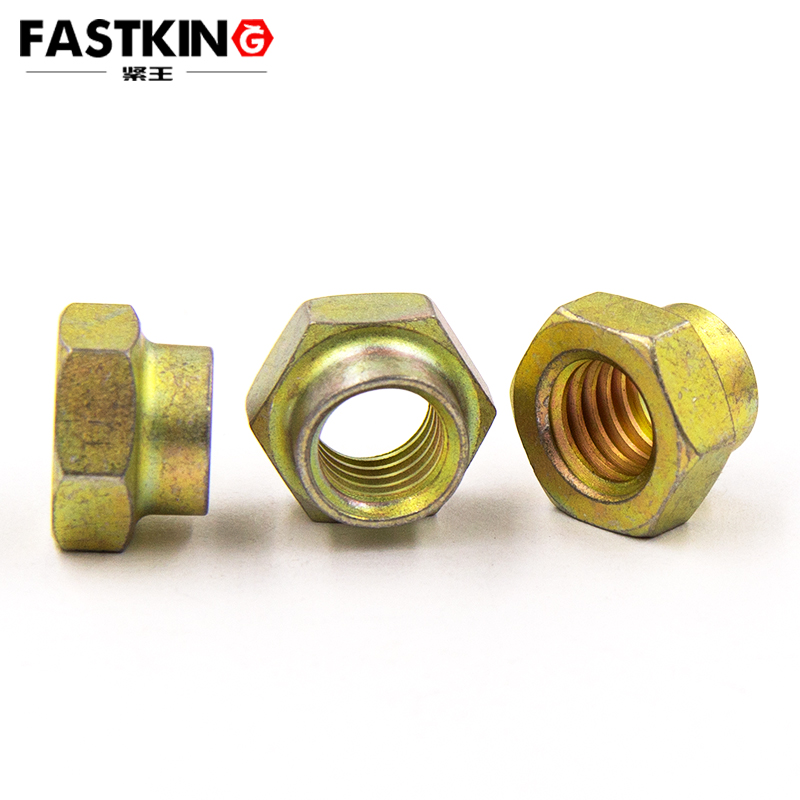Introduction
Hexagon flattened self-locking nuts are widely used in scenarios where high reliability and anti-loosening performance are required. Their unique flattened design allows the nuts to lock securely after tightening, preventing loosening caused by vibration or external forces. This article provides a detailed overview of the application scenarios, installation methods, and precautions for hexagon flattened self-locking nuts.
Application Scenarios of Hexagon Flattened Self-Locking Nuts
1. Aerospace Industry

In the aerospace sector, hexagon flattened self-locking nuts are extensively used in the fastening connections of aircraft and rockets. Aerospace equipment often experiences severe vibrations and temperature fluctuations during operation. Traditional nuts are prone to loosening, but hexagon flattened self-locking nuts can effectively prevent this, ensuring the safety and reliability of the equipment.
2. Automotive Manufacturing
In the automotive industry, hexagon flattened self-locking nuts are commonly used in the fastening of key components such as engines, chassis, and suspension systems. During vehicle operation, these components are subjected to various complex road conditions and vibrations. The self-locking function of these nuts ensures a stable connection, preventing failures caused by nut loosening.

3. Mechanical Equipment
In the manufacturing of mechanical equipment, hexagon flattened self-locking nuts are used in high-speed rotating or high-vibration machinery, such as machine tools, wind turbines, and compressors. These machines generate strong vibrations during operation, and hexagon flattened self-locking nuts can effectively prevent nut loosening, ensuring long-term stable operation.
4. Construction Industry
In the construction sector, hexagon flattened self-locking nuts are used in the fastening connections of steel structures, bridges, and tower cranes. These structures experience various external forces and environmental changes during construction and use. The self-locking function of these nuts ensures the stability of the connections, preventing safety hazards caused by nut loosening.
Installation Methods for Hexagon Flattened Self-Locking Nuts
1. Preparation
Before installing hexagon flattened self-locking nuts, it is essential to prepare the necessary tools and materials. Common tools include wrenches, torque wrenches, and power wrenches. Additionally, ensure that the surfaces of the components to be connected are flat and clean to facilitate smooth nut installation.

2. Determining the Installation Position
Based on the design drawings or actual requirements, determine the installation position of the nut. Use a marker or punch to make marks on the material surface for accurate positioning.
3. Commencing Installation
Align the hexagon flattened self-locking nut with the bolt or screw and begin tightening using a wrench or power tool. In the initial stage, apply moderate pressure to ensure the nut can be smoothly threaded. As the nut progresses, gradually increase the torque until the desired tightening force is achieved.
4. Checking Installation Quality
After installation, inspect the tightening of the nut. Ensure that the nut is tightly fitted against the surface of the connected components, with no tilting or loosening. If necessary, use a torque wrench to verify that the nut has reached the required tightening force.
Precautions
1. Selecting the Appropriate Nut Size
Choose the correct nut size based on the diameter of the bolt or screw and the thickness of the connected components. An oversized nut may result in an unstable connection, while an undersized nut may not provide sufficient tightening force.
2. Avoiding Over-Tightening
During installation, avoid over-tightening the nut, which can damage the connected components or the nut itself. Over-tightening may also deform the flattened part of the nut, affecting its self-locking performance.
3. Using Suitable Tools
Use appropriate tools for installation to prevent nut damage caused by mismatched tools. For large-scale installations, consider using electric or pneumatic tools to improve efficiency.
4. Safety Considerations
Pay attention to safety during installation to avoid injuries caused by slipping tools or flying materials. When working at heights or using power tools, always wear protective gear.
Conclusion
Hexagon flattened self-locking nuts are highly efficient and reliable fasteners, widely used in the aerospace, automotive, mechanical, and construction industries. By understanding their application scenarios, mastering the correct installation methods, and observing relevant precautions, you can ensure the quality and effectiveness of nut installation. Whether in high-vibration environments or in the structural connections of large buildings, hexagon flattened self-locking nuts play a crucial role, providing reliable fastening solutions for various engineering and product applications.
